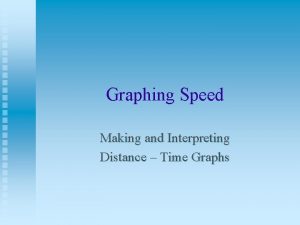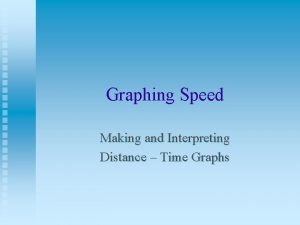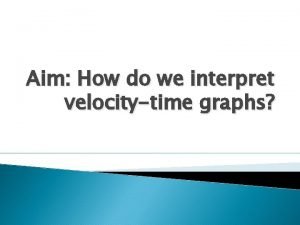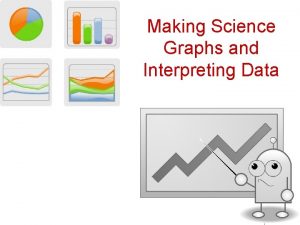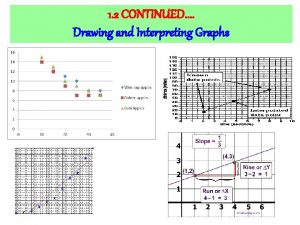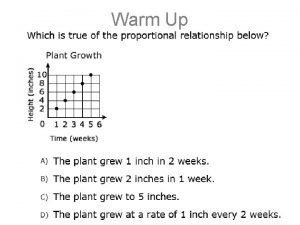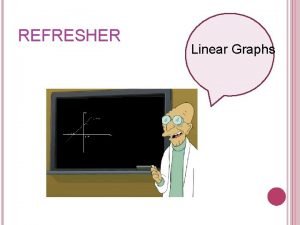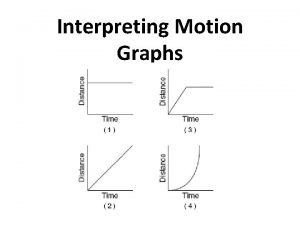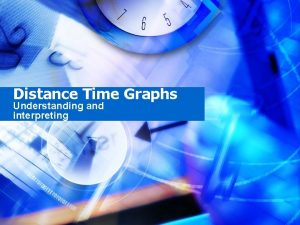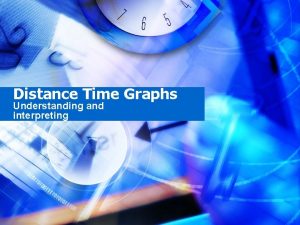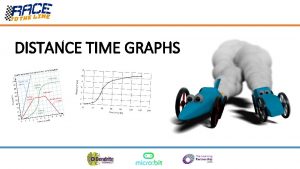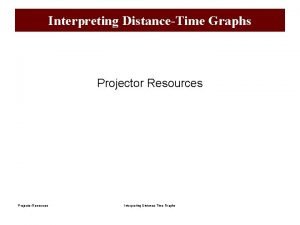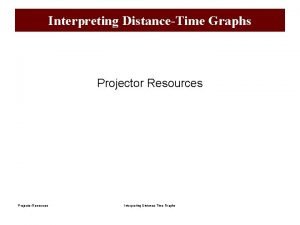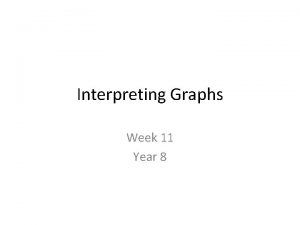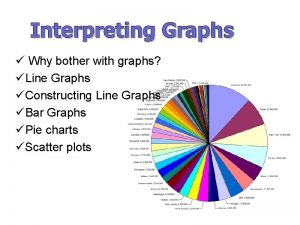Distance Time Graphs Understanding and interpreting Distance Time












- Slides: 12

Distance Time Graphs Understanding and interpreting

Distance Time Graphs • Describing a journey made by an object is not exciting if you just use words. As with much of science, graphs are more revealing. • Plotting distance against time can tell you a lot about a journey. Let's look at the axes: • • Time always runs horizontally (the x-axis). The arrow shows the direction of time. The further to the right, the longer time from the start. Distance runs vertically (the y-axis). The higher up the graph we go, the further we are from the start.

Not moving? This is what it looks like… If something is not moving, a horizontal line is drawn on a distance-time graph (dt-graph). • Time is increasing to the right, but its distance does not change. It is stationary.

Moving…. If something is moving at a steady speed, it means we expect the same increase in distance in a given time: • Time is increasing to the right, and distance is increasing steadily with time. It moves at a steady speed.

Steady Speed… • If something is moving at a steady speed, it means we expect the same increase in distance in a given time: • Time is increasing to the right, and distance is increasing steadily with time. It moves at a steady speed.

Can you describe what is going on here? • For the first part of the journey shown by the graph below, the object moved at a steady (slow) speed. • It then suddenly increased its speed, covering a much larger distance in the same time. • This sort of motion is not very realistic, but is easy to understand. It also makes calculations easier!

What is the effect of line ‘Steepness’, A. K. A slope… • Both the lines below show that each object moved the same distance, but the steeper yellow line got there before the other one: • A steeper gradient indicates a larger distance moved in a given time. In other words, higher speed. • Both lines are of constant gradient, so both speeds are constant.

The line below is curving upwards. This shows an increase in speed, since the gradient is getting steeper: In other words, in a given time, the distance the object moves is larger. It is accelerating.

There are three parts to the journey shown below: • Moving at a steady speed, slowly Not moving for quite some time Moving again, but at higher speed • In all the graphs so far, we have not seen any numbers - it's about time we did!

Finding speed from these types of graphs! • We can see that the motion shown by the yellow line is fastest. • By definition, speed = distance / time so the steepness (or gradient) of the line will give us the speed! • Yellow: speed = distance / time = 30 m / 10 s = 3 m/s • Blue: speed = distance / time = 20 m / 20 s = 1 m/s

Calculate the speeds of different sections within a graph • Stage 1: speed = distance / time = 100 m / 10 s = 10 m/s • Stage 2: speed = distance / time = 50 m / 10 s = 5 m/s • Stage 3: speed = distance / time = 150 m / 20 s = 7· 5 m/s

Lets look at the Textbook! P. 365 -2, 3, 5, 6
 Comparing distance/time graphs to speed/time graphs
Comparing distance/time graphs to speed/time graphs Interpreting distance time graphs
Interpreting distance time graphs Creating and interpreting distance time graph
Creating and interpreting distance time graph Graphing speed
Graphing speed What is the average velocity of the object
What is the average velocity of the object Tomer owns a daycare
Tomer owns a daycare Making science graphs and interpreting data
Making science graphs and interpreting data Drawing and interpreting graphs
Drawing and interpreting graphs Interpreting circle graphs
Interpreting circle graphs Interpreting graphs of proportional relationships
Interpreting graphs of proportional relationships Interpreting graphs of functions
Interpreting graphs of functions Interpreting linear graphs
Interpreting linear graphs Interpreting motion graphs
Interpreting motion graphs


